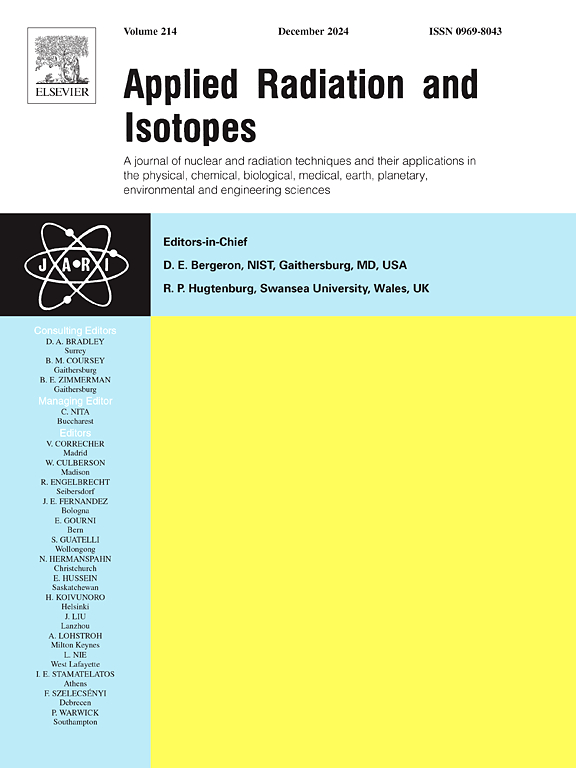Accelerator mass spectrometry for tracing fossil carbon content of combusted fuel
IF 1.6
3区 工程技术
Q3 CHEMISTRY, INORGANIC & NUCLEAR
引用次数: 0
Abstract
Fossil CO2 emission inventory from waste incineration plants needs to be determined for the purpose of emission trading in the future. A fundamental method for this is to measure the 14C content of the exhaust gas using accelerator mass spectrometry (AMS) and deduce fossil/biofraction from it. Conventionally, the CO2 in the sampled exhaust gas has been graphitized for the AMS measurement. In this work we have tested a method where the sample is fed to the AMS system in gas form, without the extra graphitizing step. The sample gas storage and feeding system of Helsinki Accelerator Laboratory is represented along with the results obtained in the test with flue gas samples from test combustion facility. The results show that the analysis of biofraction of combusted fuels is possible in feasible, reproducible and accurate ISO13833 standard compliant way with the tested method.
用于追踪燃烧燃料化石碳含量的加速器质谱法
需要确定垃圾焚烧厂的化石二氧化碳排放清单,以便将来进行排放权交易。一个基本的方法是使用加速器质谱法(AMS)测量废气中的14C含量,并从中推断化石/生物组分。通常,在采样废气中的二氧化碳已经石墨化为AMS测量。在这项工作中,我们测试了一种方法,其中样品以气体形式馈送到AMS系统,没有额外的石墨化步骤。介绍了赫尔辛基加速器实验室的样品气体储存和供气系统,以及使用测试燃烧设施的烟气样品进行测试所获得的结果。结果表明,采用该方法对燃烧燃料的生物组分进行分析是可行的、可重复的、准确的,符合ISO13833标准。
本文章由计算机程序翻译,如有差异,请以英文原文为准。
求助全文
约1分钟内获得全文
求助全文
来源期刊

Applied Radiation and Isotopes
工程技术-核科学技术
CiteScore
3.00
自引率
12.50%
发文量
406
审稿时长
13.5 months
期刊介绍:
Applied Radiation and Isotopes provides a high quality medium for the publication of substantial, original and scientific and technological papers on the development and peaceful application of nuclear, radiation and radionuclide techniques in chemistry, physics, biochemistry, biology, medicine, security, engineering and in the earth, planetary and environmental sciences, all including dosimetry. Nuclear techniques are defined in the broadest sense and both experimental and theoretical papers are welcome. They include the development and use of α- and β-particles, X-rays and γ-rays, neutrons and other nuclear particles and radiations from all sources, including radionuclides, synchrotron sources, cyclotrons and reactors and from the natural environment.
The journal aims to publish papers with significance to an international audience, containing substantial novelty and scientific impact. The Editors reserve the rights to reject, with or without external review, papers that do not meet these criteria.
Papers dealing with radiation processing, i.e., where radiation is used to bring about a biological, chemical or physical change in a material, should be directed to our sister journal Radiation Physics and Chemistry.
 求助内容:
求助内容: 应助结果提醒方式:
应助结果提醒方式:


